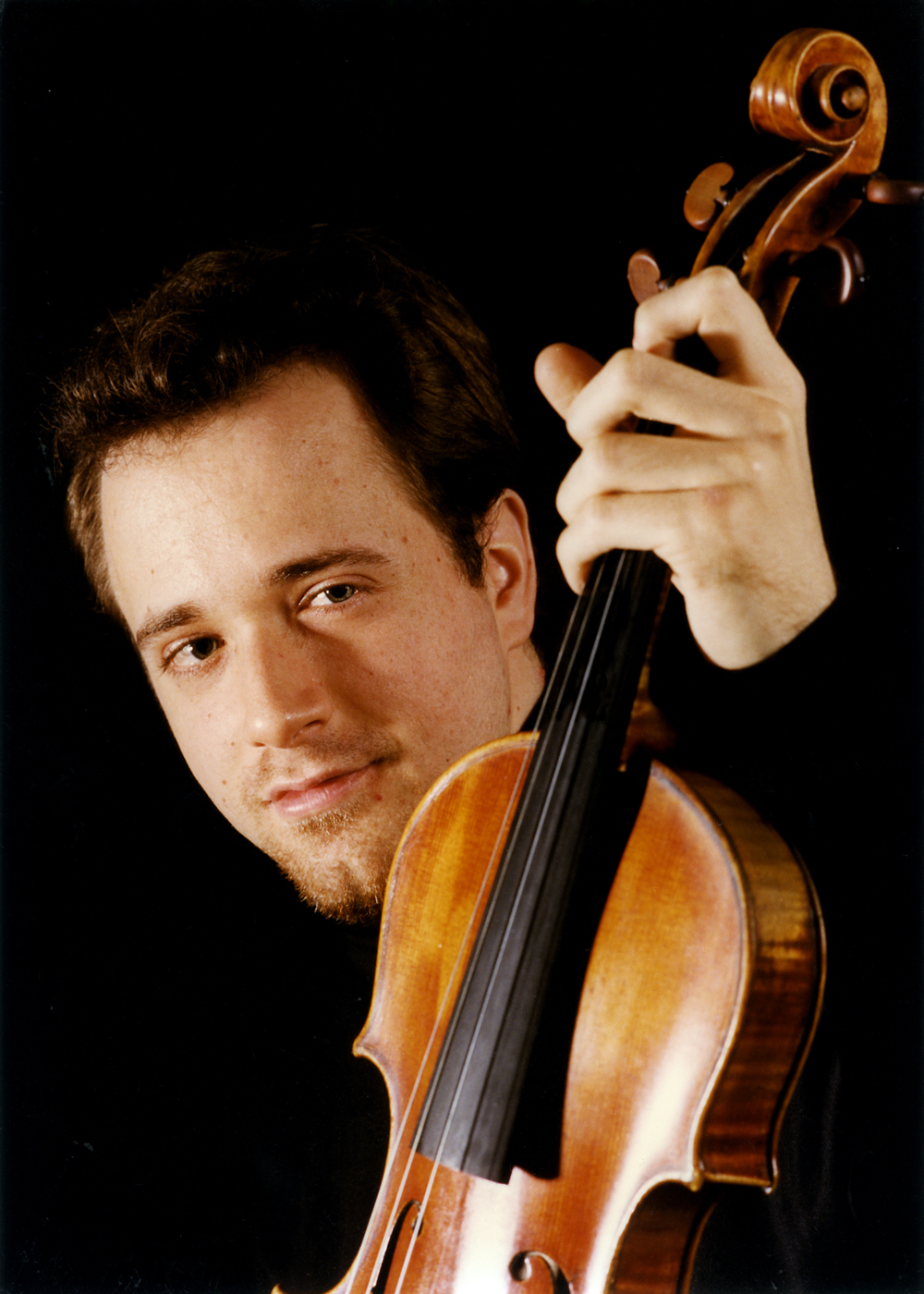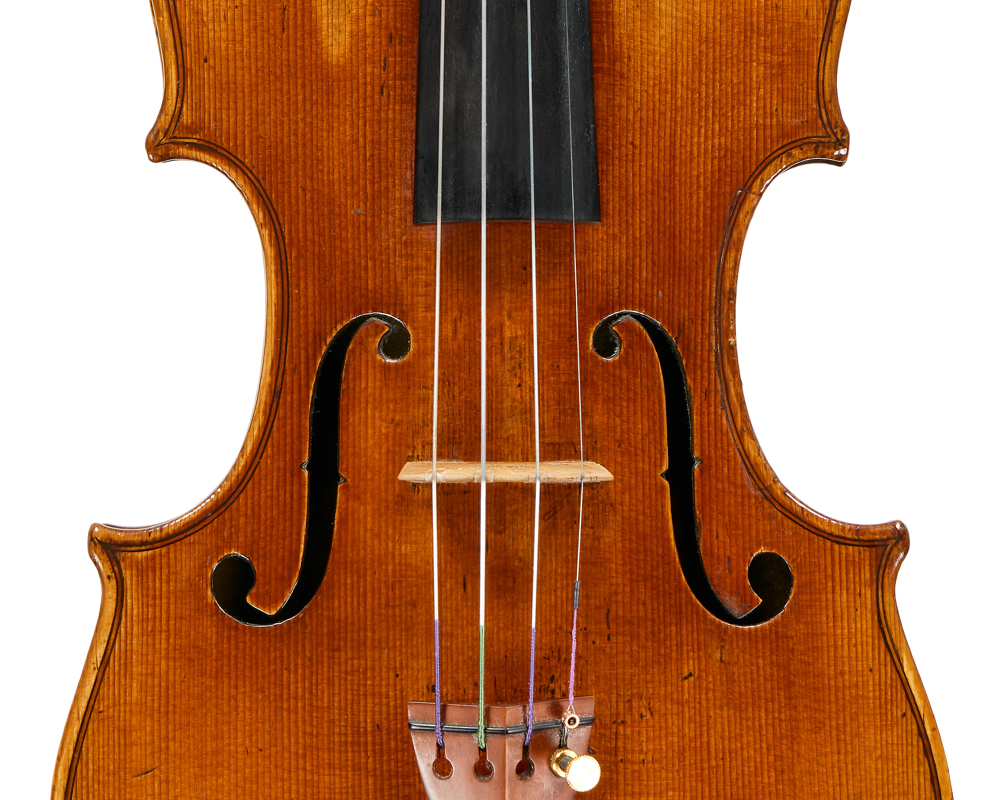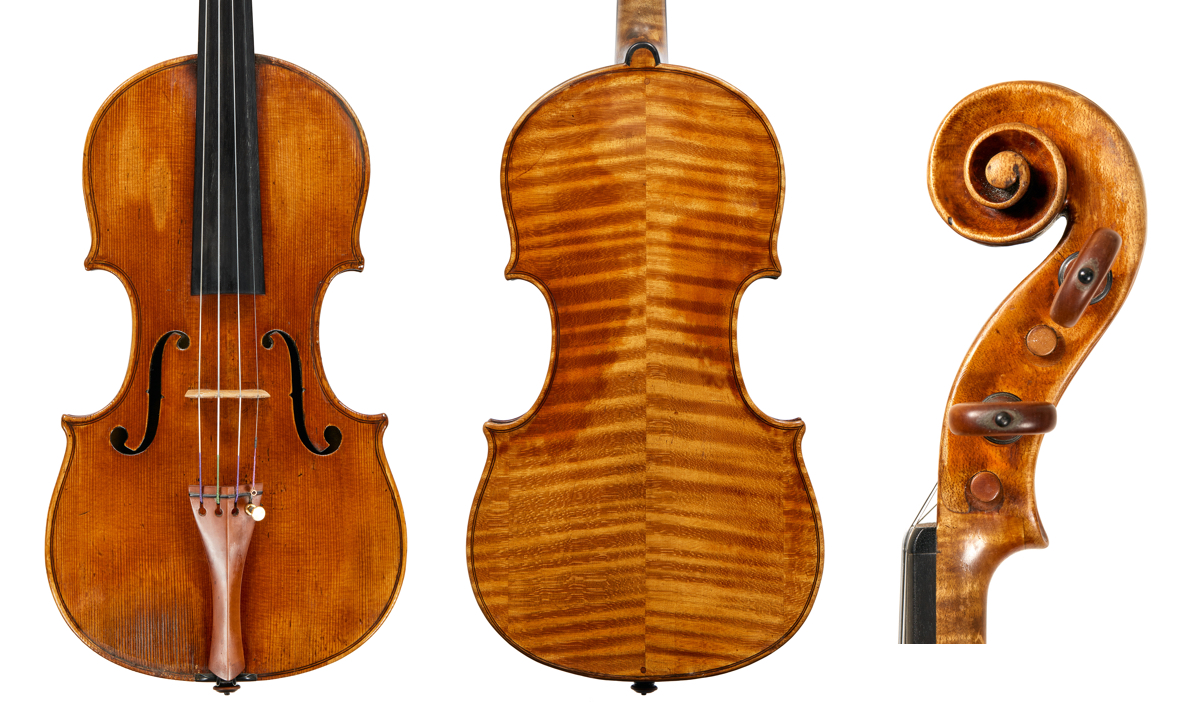‘I would say it’s definitely my forever instrument,’ says Ittai Shapira of his 1745 G.B. Guadagnini, which he has played since 1996. It was purchased for him by the philanthropist David Bowerman after Shapira had been selected for a one-year program at the Royal College of Music, having just finished his studies at the Juilliard School. ‘I had to return the violin that was on loan to me from Juilliard – it was a 1752 Guadagnini – so I didn’t have anything to play on.’

Ittai Shapira with the 1745 Guadagnini
Shapira met with Charles Beare to try out a variety of instruments and narrowed the choice down to a Grancino and the 1745 Guadagnini. ‘I was leaning towards the Grancino, but Charles said, “The Guad is for you”. I was fairly new at trying instruments and in retrospect I am extremely grateful to him because he saw that it suited my playing a lot better. I also took it to Isaac Stern – at that point I still had the 1752 Guadagnini – and he said right away, “This is the instrument for you. It sounds great, it’s much better than the other one. You should get it.”’
Shapira, who took out a loan in 2009, now owns the violin. ‘Even though it has a recognisable sound I feel like it’s still changing every day,’ he says. ‘Every day I practise very slow bows, very close to the bridge to get the maximum amount of ringing from the violin. I also practise perfect intervals every day – fourths, fifths and octaves – because it keeps the violin vibrating in a very open way.’
Having made the transition from one Guadagnini to another, Shapira describes them as quite different instruments, although both have what he calls the ‘beautiful, healthy’ Guadagnini sound. ‘The 1745 has a much stronger bass; it’s more of a solo instrument. That’s not to say that the 1752 one wasn’t a solo instrument, but it had a particularly sweet, shimmering sound.’ He’s often asked if the 1745 violin is a ‘del Gesù’ and says it plays more like a Guarneri than a Strad. ‘Other people often have a hard time playing on it because it requires a lot of weight and a fairly slow bow.’
Shapira naturally favors a heavy bow, something that he discovered after using the same bow for many years. ‘I didn’t know that it was extremely heavy – it weighed almost the same as a viola bow. Then I had a Maire on loan for a few years, which was also heavy – 64 grams. When I returned it I went to Carlos [Tome] from Tarisio, who knows my playing well, and he gave me a whole bunch of bows to try. I picked one and he was respectfully laughing at me because it weighs 65.5 grams and essentially functions as a violin and viola bow. It’s a German bow branded Roth – I love it!’
‘When I look back at a piece I realise that there’s definitely the sound of my violin embedded in it’
Although Shapira has written many compositions for the violin, he says he tries not to compose specifically for his Guadagnini. ‘I don’t want that to influence the concept of the piece. I don’t compose from the violin and with my concertos I always finish the sketch of the orchestration first. I don’t even try to play the violin part until very late in the process. But then when I look back at the piece I realise that there’s definitely the sound of my violin embedded in it. So I’d say there is a strong influence but it’s not a conscious one at all.’
‘I suppose it all stems from the sound of the violin,’ says Shapira, when asked about his interest in music as therapy. He had been suffering from headaches after receiving a head injury in his early 30s and found that ‘when I practised a certain way, playing the violin relieved me of my headaches. I didn’t know why, but when I started to do more research I became more interested in the subject.’
This research led to an involvement with the Bronx Institute for Music and Neurologic Function, which was founded by Oliver Sacks. ‘I played for a patient who was screaming at the top of her lungs,’ says Shapira. ‘I played some slow notes and over 20 minutes the screaming subsided and she said that the pain was better while I played. Then towards the end of the session I launched into a Celtic piece and I was stunned to see that she was dancing in her chair – by the end of the session she was saying, “The pain has been uplifted!”’
‘I was stunned to see that she was dancing in her chair – and by the end of the session she was saying, “The pain has been uplifted!”’
Shapira also spoke to a variety of scientists and academics from various disciplines. ‘I wanted to know what we can do as musicians to improve lives in a tangible way.’ A key meeting was with philosopher Laureen Park, which has led to a collaboration. ‘I’m writing a concerto for violin and soprano using her texts and connecting the Korean pansori style with Celtic music and the Blues. The idea is it can be used for individual healing and pain management but also for communities to sing together.’
Shapira now writes many of his compositions with a dual purpose in mind. ‘When I commit to writing something like a concerto, which is a major challenge, I write it so that certain sections can be used for certain practical applications – not just therapeutic but also educational. Different things work for different people because of individual and cultural memory. If you play certain melodies to certain people they will respond in a particular way because it means something to them. It’s exciting and complex! I think it’s all about rebuilding patterns. It’s essentially like what writing or listening to a piece of music does to us, just in a more targeted, methodical way.’
Photographs of the Guadagnini (including detail shots below) by Robert Bailey, Tarisio.
Violin by G.B. Guadagnini, Piacenza, 1745
Jason Price examines Ittai Shapira’s Guadagnini violin
The back of this 1745 violin is formed of two pieces of a stunning maple with attractive wide flame. Like other Piacenza Guadagninis the upper and lower bouts are rounded over the blocks and give the impression of sloped shoulders. The C-bouts are also rounded.
The center joint is visibly off center at the upper bouts and bisects the button biased to the bass side. The locating pins are set several mm inside the purfling which was a feature Guadagnini continued through his various periods of his career but it’s interesting to note that sometime around 1745–47 he stopped positioning the pins directly on the centre joint of his two piece backs. The pins on the one piece backs stay central for the rest of this career but the pins on the two-piece backs after 1745–47 are offset – perhaps in a conscious effort to prevent the center seam from opening over time.

The f-holes are fully s-shaped
The arching is somewhat peaked at the middle and flattened at the flanks of both the back and the front. The purfling is wide and set close to the edge. At the corners the purfling mitres point to the middle of the corner, unlike those of most Cremonese makers, who biased towards the C-bout. The corners appear to have been rounded over deliberately, possibly by a misguided restoration, or perhaps this is just the natural result of nearly 300 years of use.
The soundholes are short and fully S-shaped, but elegant and full of character. The oval lower lobes that we associate with Guadagnini had not yet come into use and the holes are circular although not perfectly round. The notches are prominent and triangular and the wings are only lightly fluted.
The head is full of character and flair. The volute is deeply carved and extremely potted in a way we associate with Guarneri ‘del Gesù’ but rarely with Guadagnini. When viewed from the front and back the turns of the volute appear not cylindrical but conical as if they were stacked flower pots coming out of each side of the head. The result is dramatic and yet elegant. The side of the head shows the small black points left over from the template Guadagnini used to lay out the volute. The back of the head is higher at the center ridge than at the edges as is typical for Guadagnini.
The attractive reddish-brown varnish of this violin and the high-quality materials foreshadow the instruments Guadagnini would make in Milan in the next period of his career.

